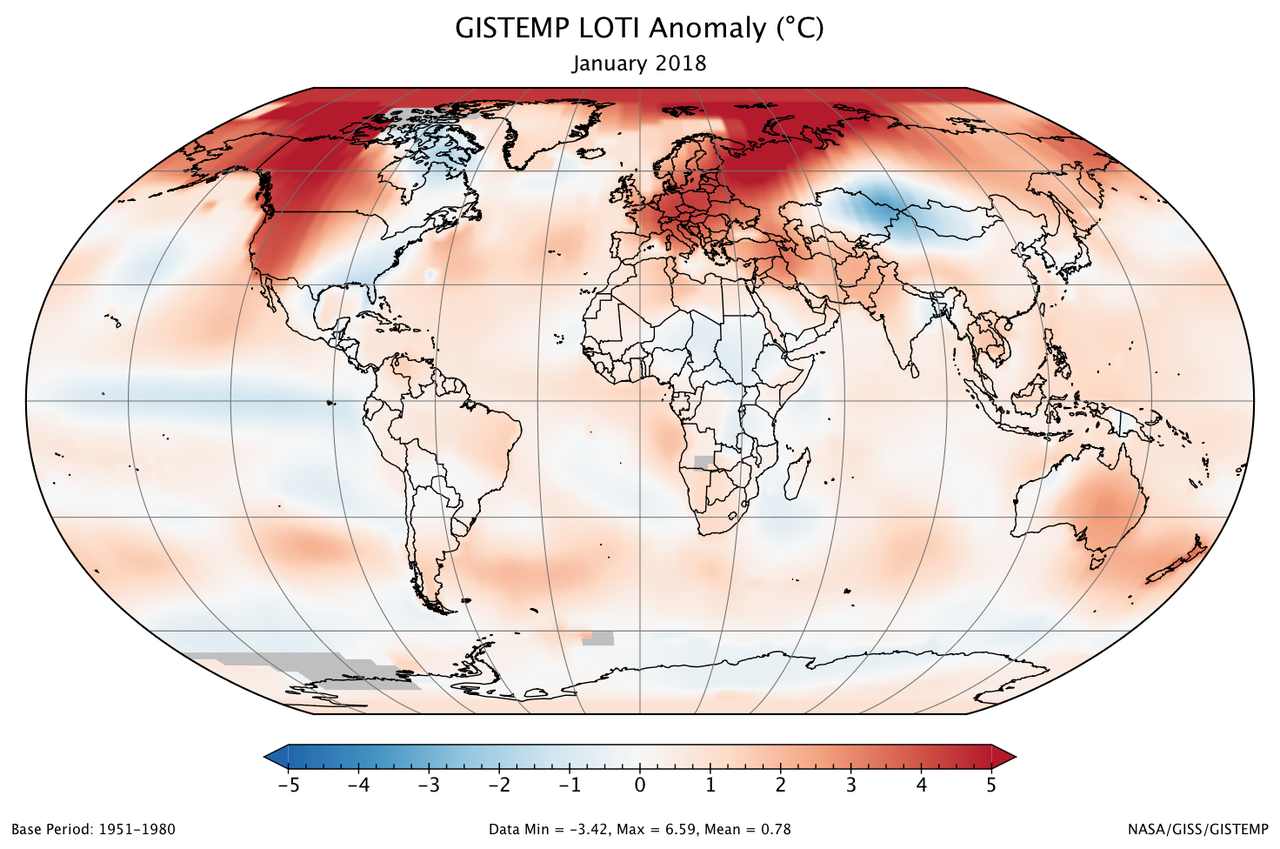News | February 15, 2018
January 2018 was fifth warmest January on record

A global map of the January 2018 LOTI (land-ocean temperature index) anomaly, relative to the 1951-1980 January average. View larger image.
January 2018 was the fifth warmest January in 138 years of modern record-keeping, according to a monthly analysis of global temperatures by scientists at NASA's Goddard Institute for Space Studies (GISS) in New York. It was cooled somewhat by the current La Niña phase of the El Niño-Southern Oscillation.
Last month was +0.78°C warmer than the average January of the 1951-1980 period. The only months of January warmer than that occurred in 2016 (+1.16°C), 2017 (+0.97°C), 2007 (+0.95°C), and in 2015 (+0.81°C). The East Coast of North America was cooler than normal — 1-2°C below the 1951-1980 mean — whereas the rest of the continent was about 5°C warmer than that period.
The monthly analysis by the GISS team is assembled from publicly available data acquired by about 6,300 meteorological stations around the world, ship- and buoy-based instruments measuring sea surface temperature, and Antarctic research stations.
The modern global temperature record begins around 1880 because previous observations didn't cover enough of the planet. Monthly analyses are sometimes updated when additional data becomes available, and the results are subject to change.
Related links
For more information on NASA GISS's monthly temperature analysis, visit data.giss.nasa.gov/gistemp.
For more information about NASA GISS, visit www.giss.nasa.gov.
Media contact
Leslie McCarthy, NASA Goddard Institute for Space Studies, New York, N.Y., 212-678-5507, leslie.m.mccarthy@nasa.gov





